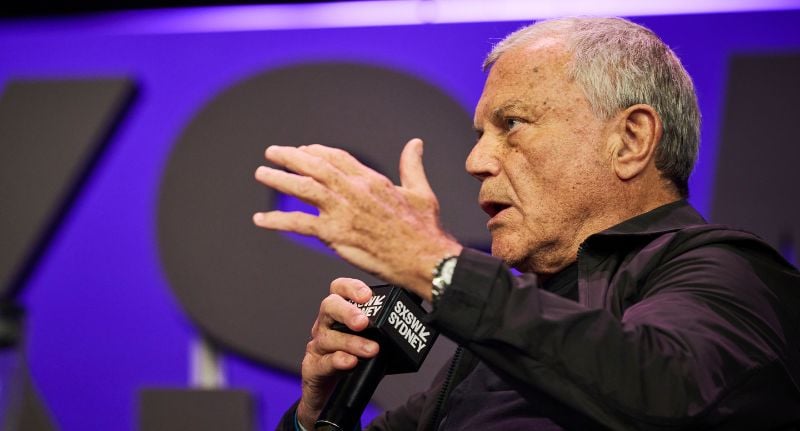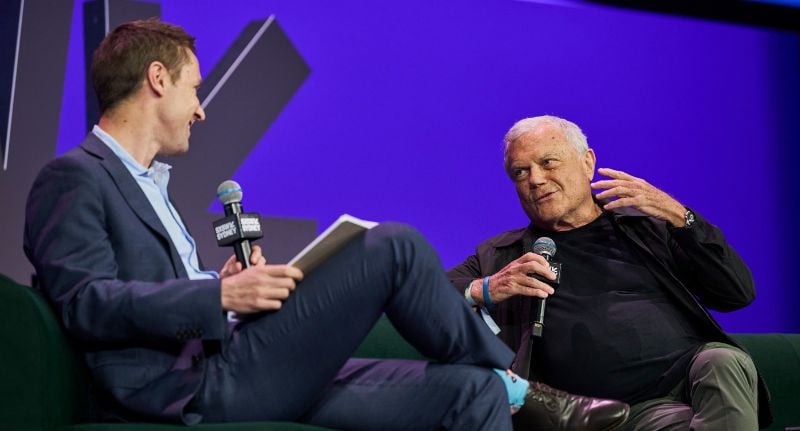Sir Martin Sorrell has outlined the marketing and advertising industry’s five biggest areas being impacted by AI and the subsequent consequences – both good and bad – during a SXSW Sydney session hosted by editor-in-chief at the AFR, James Chessell.
Visualisation and copyright
Sorrell argued the impact AI has on visualisation and copyright is causing the collapse of what the industry has always known, in terms of time and cost, particularly for TV commercial production.
“This has huge ramifications for the holding companies who probably have about a third of revenue that is dependent on the ‘old’ or ‘traditional’ way of producing things,” he said.
“With AI, you can produce at a fraction of the cost in a fraction of the time.”
Drawing on an example from a client, he said a $2.5 million commercial would typically take four months to be shot in Eastern Europe. But done agentically, it was completed in just four weeks, for a fifth of the cost.
As Sorrell outlined, for holding companies or other agencies that rely on TVC production for revenue, this shift will prove a challenge. The traditional, resource-heavy model is being undercut.
But the same disruption presents an opportunity for brands with smaller budgets or agencies with less resources to compete creatively on a more level playing field.

Sir Martin Sorrell
Personalisation at scale
Coined “Netflix on steroids”, AI could allow for major personalisation at a scale the industry hasn’t necessarily previously reached.
In Netflix’s case for example, historically they would make thousands (if not millions) of executions for major shows like Squid Game or Narcos, but with AI, “we can now do multiples of that,” Sorrell said.
The caveat, however, is that Sorrell admitted there will be fewer copywriters and fewer visualisers needed, which would inevitably reduce employment. But looking optimistically, he said the scale of personalisation using AI could be “so huge” that it opens up new employment opportunities.
“The output will be better,” he argued. “Output that humans can add the human dimension to.”
Media planning and buying
“It’s quite clear that media planning and buying will become a totally mathematical algorithmic activity,” Sorrell said with strong authority. “If there’s 250,000 people in the world who are media planning and buying today, there won’t be in two or three years time.”
Again, this shift could mean widespread job losses and a diminishing role for human intuition in favour of machine-led optimisation. However, the flip side is greater efficiency and precision.
General efficiencies
The obvious area AI is impacting the industry is in general efficiencies, both client and agencyside.
Sorrell drew on another client example to prove his point. Working with NVIDIA, AWS, and Adobe on outdoor broadcasting, once upon a time the brands would spend $2 million a year on trucks and park them outside cricket matches or football matches. But now, he said, “we can produce an AI and cloud solution at a fractional cost, probably about 10 or 20 per cent of the cost.”
Democratisation of knowledge
The final, and most powerful, area is how AI is freeing up information and democratising knowledge. Sorrell said the issue that “bedevils” clients and agencies is “politics with a small p”.
Explaining what he meant by this, he said it is “people building silos or verticals by controlling information”.
“It sounds a little strange, maybe, but it is the most powerful thing that AI will do.”


